
News and Articles from 2020
Choose a year
2020 Roundup
30th December 2020
MAJOR NEW RELEASE
During 2020 we added:
Parish Records
Over 16 and a half million individuals have been added to our parish records collection, with images across thirteen counties. These fully searchable records reach back to the mid 16th century, and allow family historians to find the names of forebears, their parents' forenames, the father's occupation (where noted), the parish that the event took place in and see the images of the original parish register.
Map Explorer™
We continued to add to our innovative Map Explorer™ with new recordsets this year, including adding our ongoing release of Lloyd George Domesday records. This unique online resource includes maps and field books and allows family historians the chance to discover where an ancestor lived in the period just before and as the First World War began. When used with the 1911 Census it gives lots of additional information about your ancestors' home, land, outbuildings and property. By making use of our powerful Map Explorer™, you can then see how the landscape where you ancestor lived or worked changed as the years progressed.
R.A.F. Records
We released over 5.5 million records of R.A.F. Operations Record Books (ORBs) into our ever-expanding military records collection. This is the first time that these R.A.F. records have been made available in a form that is fully searchable by name, aircraft, location and many other fields, making it easier than ever for you to find your aviation ancestors.
Number of Tithe Maps on Map Explorer™ Doubled
Six counties of attractive Colour Tithe Maps and nine counties of Black and White Tithe Maps were also added to the versatile and powerful Map Explorer™ this last year. With this addition Victorian ancestors of all levels of society, who owned or occupied land, can be found in the maps and the linked apportionment schedules. All the maps have been georeferenced to allow you to find how an ancestor’s land relates to the changing landscape on other historical and modern maps by using the features of the Map Explorer™
Finding Elusive Ancestors - The Genealogist's Toolbox
allows you to search the census for a person, a family or even an address, helping you to identify elusive ancestors or those with common surnames. Instead of trawling through hundreds of thousands of John Smiths, specify his wife was Emma and their son was Mark to instantly refine down to one result! Using the keyword box you can search using an occupation, place of birth or address to narrow down your results. Ancestors' names aren't always recorded as we might expect. As well as using wildcards and filtering using the phonetic sound to look for variant spellings, you can leave the name boxes blank, entering just a keyword or two, a year of birth or selecting a county, which can be particularly useful for identifying name variations.
Keep a watch on the news as we are planning some huge additional record collections in 2021.
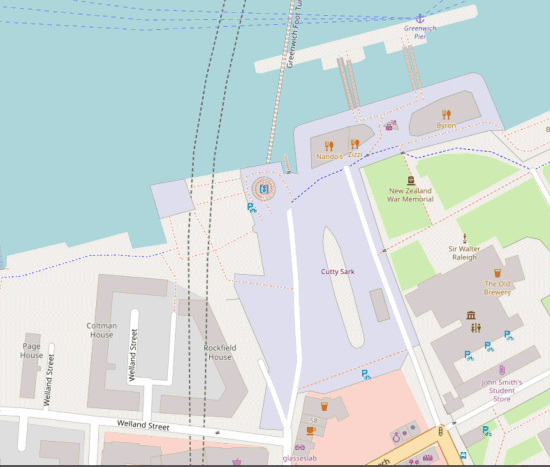
New Education Records Released
4th December 2020
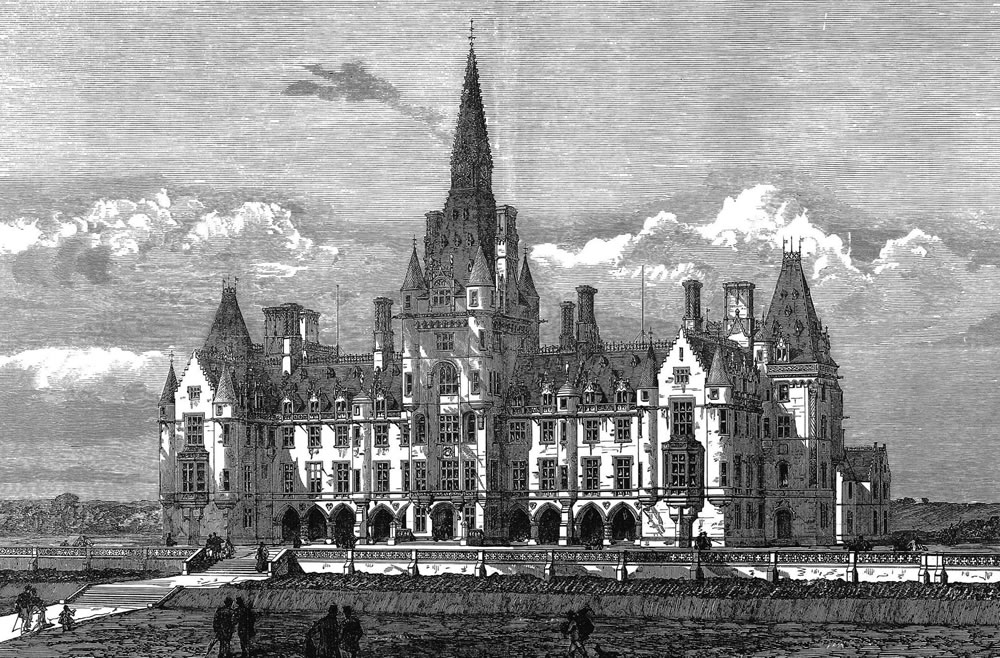
We've released more College and University registers into our expanding Educational Records, adding a quarter of a million additional individuals. This release includes records from England, Scotland, Ireland, The Netherlands, New Zealand and even a college from Portugal.
The records can be used to discover a student’s achievements and are fantastic for identifying where next to apply your research for an ancestor. Educational records will confirm birth dates and sometimes the place of birth. Usually, they give a father’s name and address, which is useful when the parent is missing from the census, and they can give details of the student’s occupation and a great deal more useful information.
Researchers can use this new data to find ancestors who attended or taught at a variety of Educational establishments in a wide range of years up to the mid 1930s. The earliest record in this release is dated 1566 in the Christ's Hospital Exhibitioners to the Universities of Oxford and Cambridge, 1566-1923. In contrast, the latest record is 1936 taken from the List of Occupants of Rooms in St John's College 1895-1936.
These records can also be used to identify those who held high office in the institutions, so that University patrons, deans, visitors, professors and masters and the principals and governors of schools are usually included.
Also in this release we have some fascinating Irish Examination Board records from 1889, 1891 and 1892. These reveal the candidates’ names, addresses and grades in all their subjects, including some rather unusual ones. If you can find an ancestor, within these records, it will certainly be an eyeopener as they disclose what subjects your forebear had been a good or a bad student of.
The registers released on TheGenealogist today are:
| Aberdeenshire |
|
| Cambridgeshire |
|
|
|
|
|
|
|
|
|
|
|
| Devon |
|
| Dublin |
|
| Edinburgh |
|
|
|
| Ireland |
|
|
|
|
|
|
|
|
|
| London |
|
| Netherlands |
|
| New Zealand |
|
|
|
| Oxfordshire |
|
|
|
|
|
|
|
|
|
|
|
|
|
|
|
|
|
|
|
| Portugal |
|
| Surrey |
|
| Yorkshire |
|
New R.A.F. Operations Record Books released
20th November 2020
We have released additional new RAF records that are fully searchable by name, aircraft, location and many other fields, making it simpler to find your air force ancestors.
In a release of over 1.8 million records, this batch of RAF Operations Record Books (ORBs) joins our huge military records collection and includes entries for the famous children's author Roald Dahl when he flew Hurricanes in WW2.
The Operations Record Books record the stories of day to day operations of units and so will give the researcher an idea of action that took place as well as give insights into the everyday lives on the bases. You can use this collection to follow an airman's war time experiences by searching these fully searchable Air Ministry operations record books which cover various Royal Air Force, dominion and Allied Air Force squadrons that came under British Command.
These new records uncover a spy, ace fighter pilot, chocolate historian, medical inventor and the world's greatest children's author. Of course, we're talking about Roald Dahl and you can read about his adventures in these new records, such as when his plane crashed and burst into flames on the desert floor between his own forces and enemy lines. Read our article which includes official versions of some of the exploits that he retold in his books!

New Lloyd George Domesday records for Lambeth and Surrounding Areas
6th November 2020
We have just released the records of over 83,000 individuals for the Lambeth area into our property ownership and occupancy record set. This unique online resource includes maps and field books and gives family historians the chance to discover where an ancestor lived in the period just before and as the First World War began.
This is a great tool to use with the 1911 Census giving lots of additional information about your ancestors' home, land, outbuildings and property. By making use of our powerful Map Explorer™ the researcher can see how the landscape where their ancestor lived or worked changed as the years have passed.
The Lloyd George Domesday Survey plans include plots for the exact properties and are married to various georeferenced historic map overlays and modern base maps on the Map Explorer™. With this resource the researcher is able to thoroughly investigate the area in which an ancestor lived.
- Link individual properties to extremely detailed maps used in 1910-1915
- Fully searchable by name, county, parish and street
- The maps will zoom down to show the individual properties as they were in the 1910s
- The transparency slider reveals a modern street map underlay
- Change the base map displayed to more clearly understand what the area looks like today
Lambeth records cover the civil parishes of Bishop's, Brixton, Brixton North, Clapham North, Clapham South, Lower Norwood, Marsh North, Marsh South, Norwood, Prince's, Stockwell North, Stockwell South, Streatham and Vauxhall.
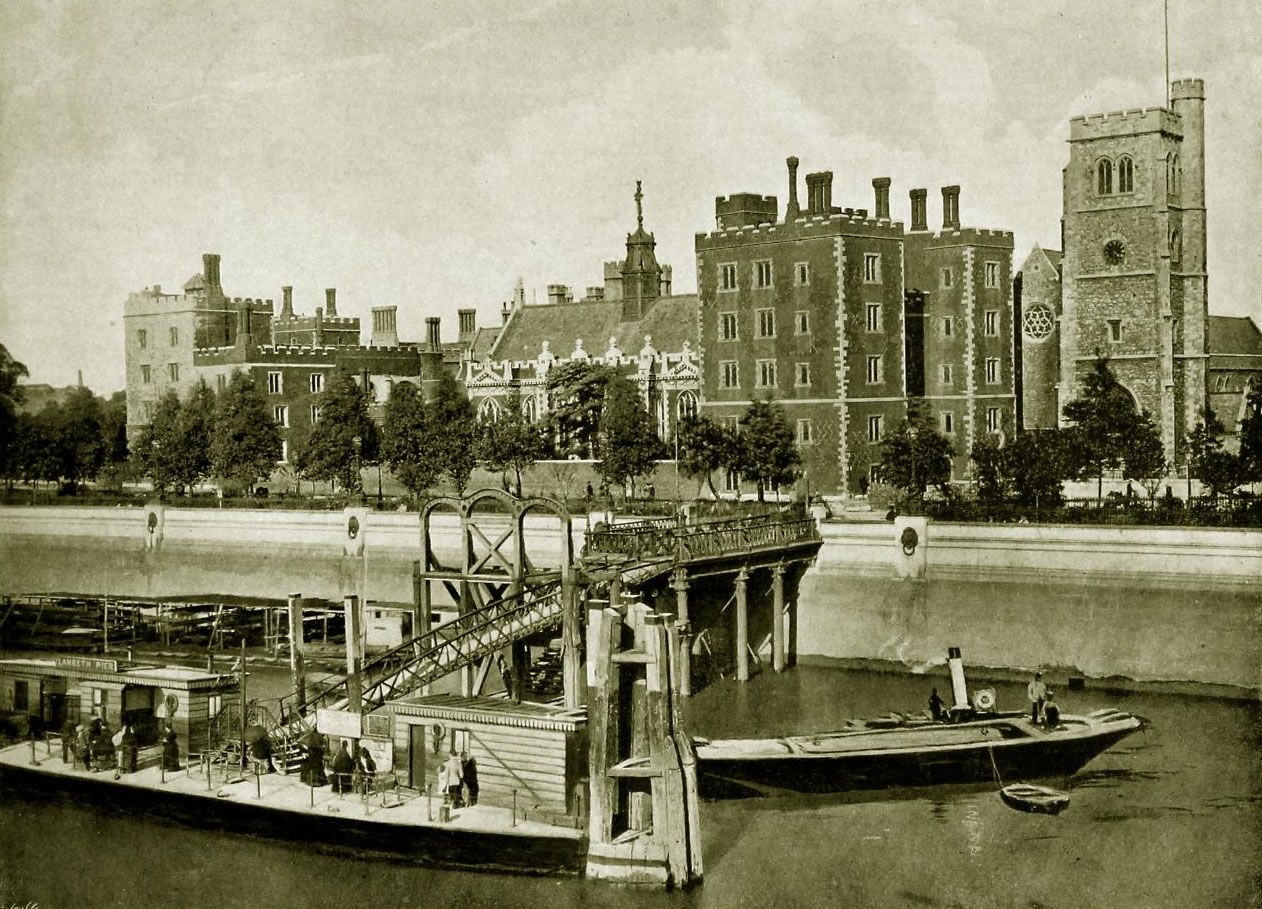
Complete set of Anglican Parish Records for Wales Launched with Images
23rd October 2020
MAJOR NEW RELEASE
All Anglican Parish Registers for Wales can now be searched on TheGenealogist, in association with Welsh Archives. This huge release contains 8 million Parish Records, listing over 14.5 million individuals, with images of the original registers.
"We are very excited to be releasing parish records for all 13 historic Welsh counties. We're thankful for the input of Welsh records experts from the archives, to make sure that we have accurate parish and place names. This will make it much easier for researchers to find records that they may have experienced difficulties with trying to find elsewhere.
Our keyword search makes it surprisingly easy to find the record you're after, using either the modern, old or Welsh version of a place name and our unique SmartSearch allows you to find families listed in the registers.
These records complement our nonconformist records for Wales which include Methodists, Quakers and more, giving you the ultimate resource for finding your Welsh ancestors' vital events.
Click here to read more about these records
This release includes all historic Welsh counties:- Anglesey, Brecknockshire, Caernarfonshire, Cardiganshire, Carmarthenshire, Denbighshire, Flintshire, Glamorgan, Merionethshire, Monmouthshire, Montgomeryshire, Pembrokeshire and Radnorshire.
"We are delighted that TheGenealogist is releasing these records to a wider audience. Being able to access them from the comfort of your own home, especially during the current situation, is of great benefit. For this release, we've painstakingly gone through the metadata, improving all the place names in this record set, recording chapels of ease, parent parishes of modern parishes, and variant spellings in the English and Welsh languages. This will mean that searches for your ancestor in the parish records, which previously might have turned up no results, will have a much greater chance of finding them for you. If you've previously struggled to find your ancestors' Welsh Parish Records, I'd really encourage you to search these records.""
This release has been made possible by the participation of the following archives:- Anglesey Archives, Carmarthenshire Archive Service, Ceredigion Archives, Conwy Archive Services, Denbighshire Archives, Flintshire Record Office, Glamorgan Archives, Gwent Archives, Gwynedd Archives Service, Pembrokeshire Archives and Local Studies, Powys Archives and West Glamorgan Archive Service.
Ruth Jones, co-creator of the popular comedy Gavin & Stacey discovers her ancestors in the records, you can read about Ruth's discoveries here.
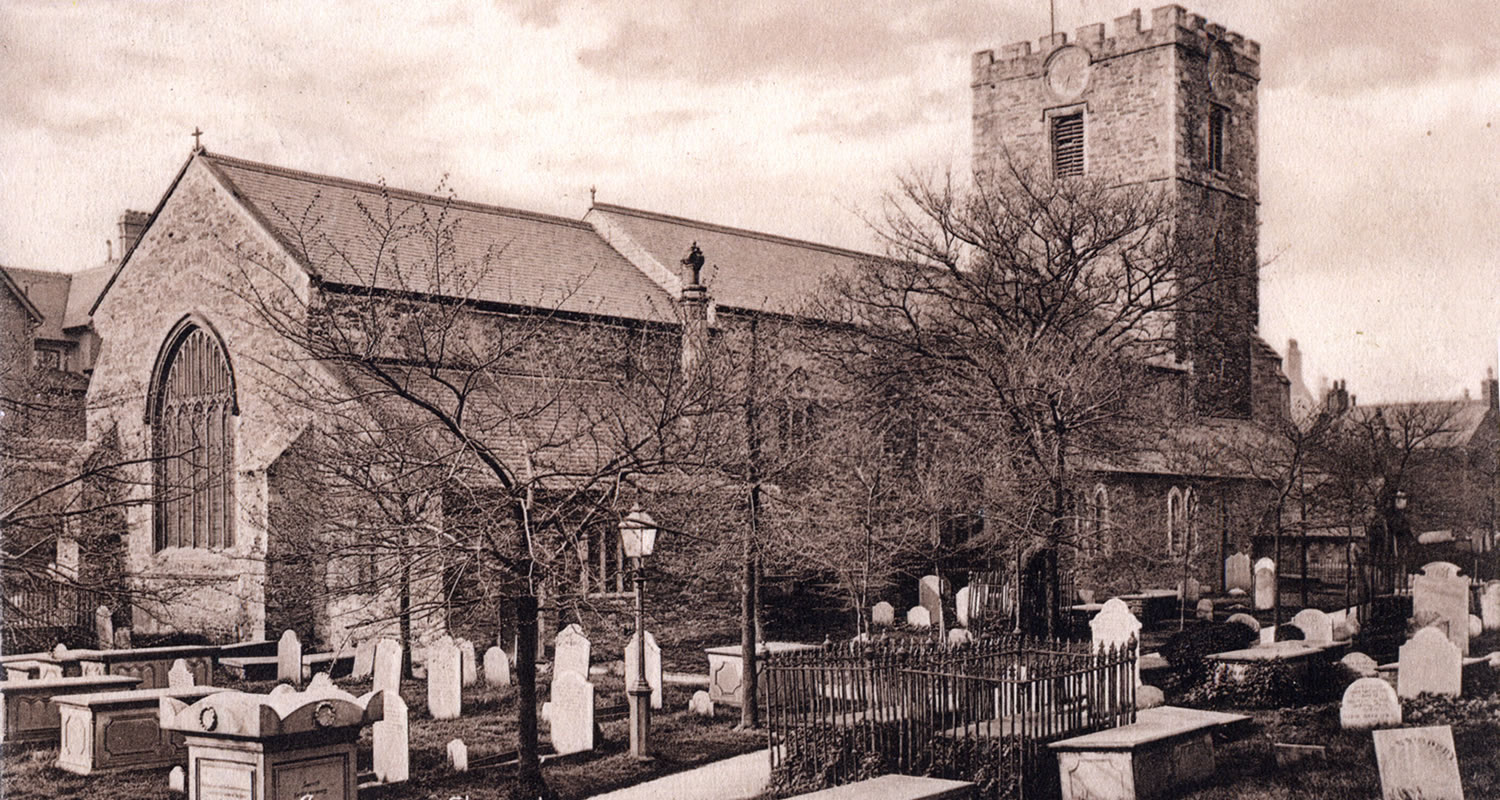
New Norfolk Parish Records
9th October 2020
We have added over 1.54 million individuals to our Norfolk Parish Record Collection, bringing the total number of individuals in the parish records for Norfolk to over 11.5 million.
These records are released in association with the Norfolk Record Office and have the benefit of high-quality images to complement the transcripts, making them a valuable resource for those with ancestors from this area.
As an example, we can find the one-time owner of the Sandringham estate, many years before it became the royal residence that it is today. In the Elizabethan era, a manor was built on what is the site of the present house. By the 18th century, it had come into the possession of the Hoste Henley family who were descendants of Dutch refugees. In 1771 Henry Cornish Henley cleared the site to build a Georgian mansion, Sandringham Hall.
Using the Parish Records on TheGenealogist we are able to find the burial record for this gentleman and see that it was in 1773. It would seem that Henley died before the House was completed and so then it passed to his son, who would eventually sell it to a neighbour.
This new addition to our ever-growing Parish Records collection features fully searchable records of church registers from parishes in Norfolk. With records that reach back to the mid 16th century, this release allows family historians to find the names of forebears, their parents' forenames, the father's occupation (where noted), and the parish that the event took place in.
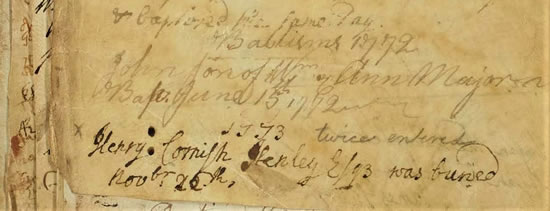
Number of Tithe Maps on Map Explorer™ Doubled
4th September 2020
We have just released over 3,000 new Tithe Maps to our Map Explorer™, bringing the total to over 6,900 maps. Map Explorer™ now has over four million selectable records shown using Map Pins, displaying maps for historical periods up to the modern day. By making use of our powerful Map Explorer™, you can see how the landscape where your ancestor lived or worked changed over time.
Map Explorer™ now features various colour and black and white Tithe maps as well as modern map base layers and historical maps which are all georeferenced to allow you to see how places change over the years. Map Explorer™ is a useful tool for browsing an ancestor's area to find other plots that they owned or occupied, while our Master Search can be used to look for ancestors' plots across the tithe records and then view them on Map Explorer™.
The addition to Map Explorer™ this week of the black and white tithe maps for Cheshire, Dorset, Hertfordshire, Kent, Lancashire, Lincolnshire, Norfolk, Staffordshire and Yorkshire West Riding are linked to the apportionment books which enable you to discover ancestors who both owned or occupied property between 1837 and the 1850s, with some additional altered apportionments in later years when property was sold or divided.
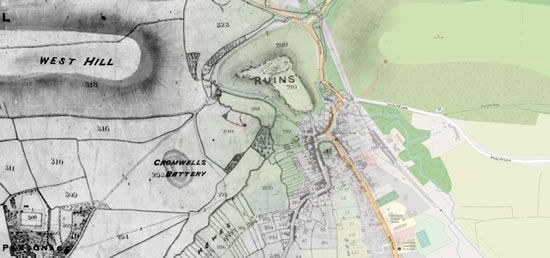
New Poll Book Records Released
21st August 2020
We have just released over 266,000 records into our ever-growing Poll Book Record Collection. This useful resource for family historians can be used to find the address of an ancestor's residence from the period before and after the census records. The newly released Poll Books range from 1747 to 1930 and join records that also cover periods between the census years.
The records cover 36 different registers of people who were entitled to vote and includes constituencies situated in Bath, Devon, Hampshire, Hertford, Kent, Lincolnshire, London, Monmouthshire, Northumberland, Rutland, Scotland, Shropshire, Somerset, Staffordshire, Suffolk and Surrey. The release allows researchers to:
- Find ancestors who had the vote
- Discover where ancestors were registered to cast their ballot
- See the nature of their qualification to vote, such as owning rateable property
- Search Poll Books that range from 1747 to the 1930s
Find out how poll books and electoral rolls can be used to locate your ancestors in our featured article.
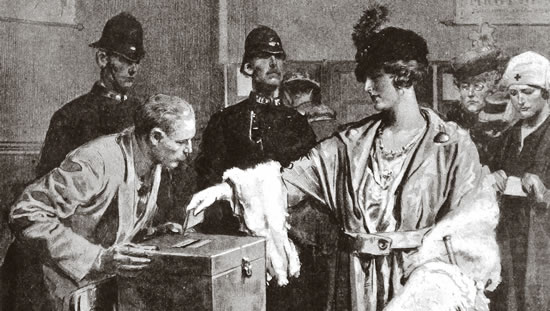
Hounslow Lloyd George Domesday Records Released
7th August 2020
We have just released the records of over 33,000 individuals for the Hounslow area into our property ownership and occupancy record set: The Lloyd George Domesday Survey. This is a unique online resource that includes maps and field books and gives researchers the ability to discover where an ancestor lived in the 1910-1915 period. By making use of our powerful Map Explorer™, you can see how the landscape where your ancestor lived or worked changed over time.
The Lloyd George Domesday Survey plans include plots for the exact properties and are married to various georeferenced historic map overlays and modern base maps on the Map Explorer™. With this resource, the researcher is able to thoroughly investigate the area in which an ancestor lived.
- Link individual properties to extremely detailed maps used in 1910-1915
- Fully searchable by name, county, parish and street
- The maps will zoom down to show the individual properties as they were in the 1910s
- The transparency slider reveals a modern street map underlay
- Change the base map displayed to more clearly understand what the area looks like today
Hounslow records cover the areas of Bedfont, Chiswick, Cranford, Feltham, Hanworth, Heston, Isleworth, New Brentford and Old Brentford.
Read our article to see how Chiswick House (featured in the release) became a 'Lunatic Asylum' before the First World War and a Fire Station in World War 2.
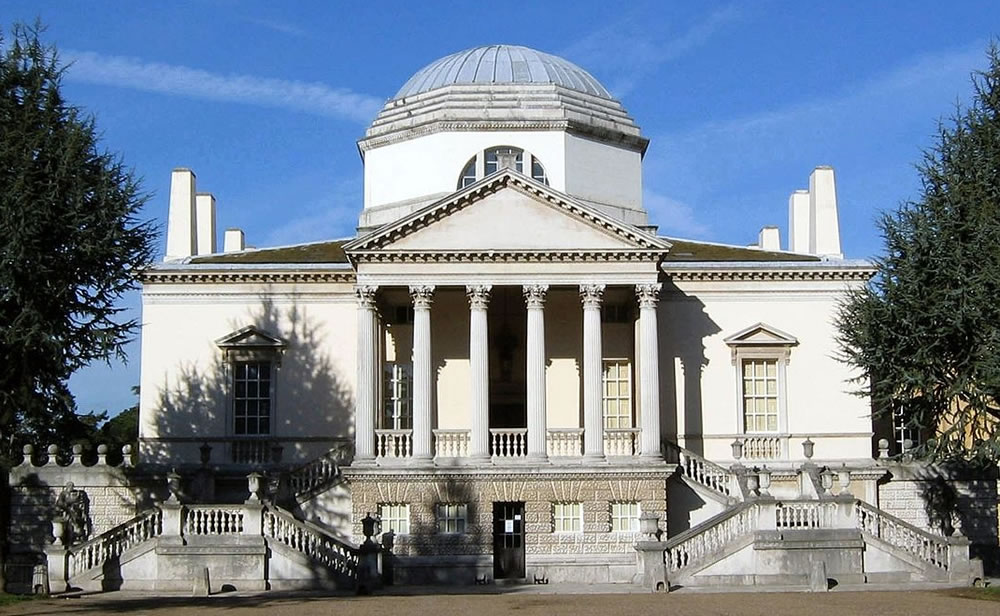
New records to help find your Australian cousins
24th July 2020
We have added a set of new resources which can be used to find ancestors who lived in Australia in the past. These name rich resources are sourced from a diverse range of historic books and directories which can be useful for finding out information such as where ancestors lived and what their occupations were.
Use these records to:
- Add details to the lives of your Australian ancestors
- Locate ancestors' homes and business addresses in street directories
- Discover lists of Doctors, Chemists, Dentists, Lawyers and Teachers
- Find Municipality officials, Magistrates, Clergy, Secretaries of Clubs and Societies
- Search for Australian Military personnel (Army & Navy)
- See advertisements for traders, hoteliers and ship owners, etc.
- This latest release expands our International records collection.
To find out more about these records, you can read our article "Find out more about your Australian cousins and their lives down under".
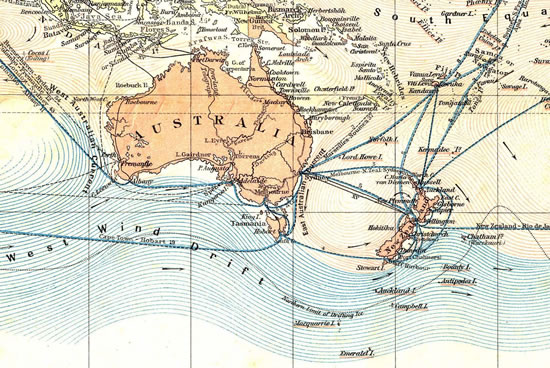
2 Million New RAF Records
10th July 2020
To mark the 80th anniversary of the start of the Battle of Britain (10 July 1940 - 31 October 1940) we have released over 2 million new RAF records. These records not only cover this important fight for Britain's survival, but also encompass all of the Second World War period for a number of squadrons. This release brings the total ORBs records to 3.7 million and are part of our extensive Military records collection.
The ORBs are fully searchable by name, aircraft, location and many other fields, making it easy for researchers to find their aviation ancestors. The fascinating pages from these diary-like documents tell the stories of brave aircrew, including those at the time of the Battle of Britain. Recording patrols flown, the daily journal records give insights into the everyday lives of the personnel on bases. Researchers can use the collection to follow an airman's war time experiences which cover various Royal Air Force, dominion and Allied Air Force squadrons that came under British Command.
These records allow the family history researcher an interesting insight into relatives who had served in air force units under wartime conditions. They provide a summary of daily events - some are ordinary entries, such as the names of new pilots posted to the squadron, entertainment on the base, or even noting the fact that an officer has become engaged. Sadly, these ORBs also record the death of pilots, crashes, or names of airmen that were missing in action. As names of personnel are recorded in these reports, for a family history researcher wanting to follow where an ancestor was posted and what may have happened to them in the war, ORBs are often very enlightening documents.
Use these records to:
- Read the war movements of personnel in air force units
- Discover if a pilot, navigator, radio operator or gunner is mentioned in the action
- Find if an airman is listed for receiving an Honour or an Award
- Add colour to an aircrewman's story
- Note the names of squadron members wounded, killed, or did not return
- Easily search these National Archives records and images
To find out more about these records, read Nick Thorne's article "Ace in a Day".

New Parish Records Released
3rd July 2020
We have added over 85,500 individuals to our Parish Records for Worcestershire in association with Malvern Family History Society. This is an ongoing project where high quality transcripts of Parish Records are made available for family history researchers to find their ancestors. Included in this release are:
- 54,948 baptism records
- 8,703 marriage records
- 3,558 banns of marriages records
- 18,293 burial records
These new records can be used to find your ancestors' baptisms in fully searchable records that cover parishes from this part of the English midlands. With records that reach back to the mid 16th century, this release allows family historians to find the names of ancestors, their parents' forenames, the father's occupation where noted, and the parish where the event took place.
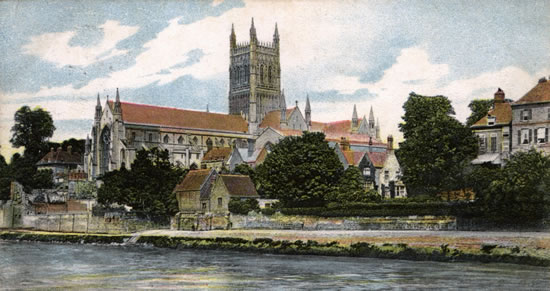
New Headstone Records Released
20th June 2020
We have expanded our growing International Headstone Collection with nearly 53,000 new additions that allow researchers to see details that have been carved on stone about their ancestors and commemorated in various churches and cemeteries.
The headstone records released cover 71 new cemeteries from the English and Welsh counties of Buckinghamshire, Cheshire, Conwy, Denbighshire, Devon, Dorset, Essex, Flintshire, Gloucestershire, Hertfordshire, Kent, Lancashire, Merionethshire, Merseyside, Oxfordshire, Somerset, Warwickshire, West Midlands, Wiltshire and Worcestershire. These new records are all available as part of our Diamond Subscription.
The International Headstone Collection is an ongoing project where every stone photographed or transcribed earns volunteers credits, which they can spend on subscriptions at TheGenealogist.co.uk or products from GenealogySupplies.com. Click here to find out more.
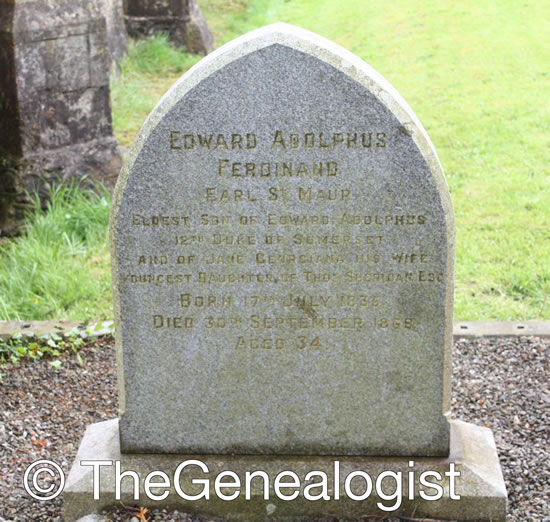
New Historical Medical Professionals
5th June 2020
At this time when we are all so very conscious of the work of our medical professionals in the face of the pandemic, we have released a set of new records for our medical ancestors who treated others in the course of their occupations in the time before the creation of the National Health Service.
It would have been a very different world from today in which these men and women worked. Before 1948 and the founding of the NHS, medical professionals were in private practice. The poorer members of society depended on charity and being assessed for what financial contribution they could make to their treatment.
TheGenealogist has added to its occupational records with a fascinating release that has a medical theme. From the time before the NHS came into being, these name rich records covering Doctors, Midwives and Opticians can be searched by name and keywords. All of these practitioners would have been working at the time when the wealthy could afford the best treatment, while the poor went to hospital with the added shame that this held as these institutions were where the poor were predominantly treated.
Use these records to:
- Add details to the lives of your medical ancestors
- Discover Doctors etc. who served in India in The Madras Medical Register 1934
- Find Medical Ancestors in The Medical Who's Who 1912
- Seek out midwives in The Midwives Roll 1905
- See optometrists names in the Institute of Ophthalmic Opticians, Official Directory, 1927
This latest release expands our extensive Occupational records collection that includes actors, apprentices, clergy, crew lists, directors, flight, freemen, law, railway, sports, teachers and biographies as well as other medical registers.
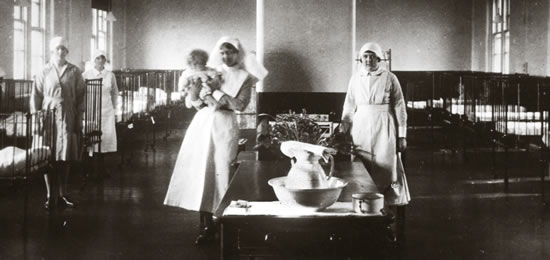
Over One Million RAF Operations Record Books released
22nd May 2020
We have expanded our unique collection of searchable RAF Operations Record Books with the addition of 1.2 Million new records for aircrew operations.
Operations Record Books (ORBs) are official Air Force documents chronicling an air force unit from the time of its formation. They were intended to be an accurate daily record of the operations that the squadron carried out in peace and at war. The ORBs are for squadrons primarily after the First World War, but there are a few early squadron records from 1911 to 1918. We have made the Operations Record Books fully searchable by name, year and keywords.
This collection also includes some record books for Dominion Air Forces (Australia, Canada, New Zealand and South Africa) as well as Allied Air Force squadrons under British Command and can be used to find the stories of brave aircrew, giving insights into the operations that they carried out. The ORBs follow a daily diary format giving summaries of events and can reveal the death of aircrews, crashes, as well as less disquieting entries such as the weather for flying, promotions and the decorations men of the squadron received. ORBs also detail the areas that the fighter planes patrolled, or the bombers targeted, as well as where the squadrons were based as the war wore on. These duties and assignments include bombing the enemy, patrolling the skies, convoy escorts, submarine hunts, attacking docks & shipping, dive bombing raids, and more.
As aircrew personnel are named in these reports, those wanting to follow where an ancestor had been posted to and what may have happened to them will find these records extremely informative.
Use these records to:
- Add details to an aircrewman's story
- Study the war movements of personnel in air force units
- Discover if a pilot, navigator, radio operator or gunner is mentioned in the action
- Note dates airman received promotions, medals, or other honours
- See the names of squadron members wounded, killed, or who did not return
- Easily search the transcribed records and images licensed from The National Archives
This latest release expands our extensive Military records collection and is available to all Diamond subscribers.
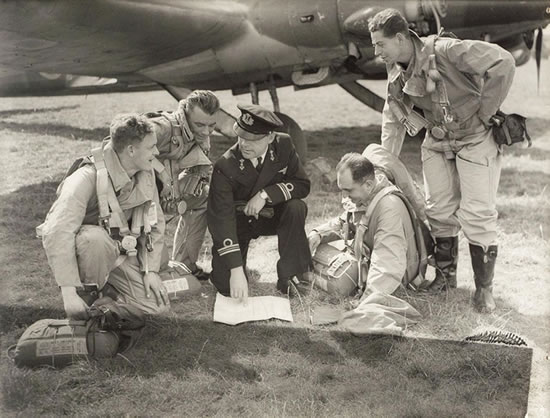
Tithe Maps added to Map Explorer™
7th May 2020
Our Map Explorer™ which can help researchers find an ancestor's property and watch the landscape change over time has now been enhanced by the addition of georeferenced black and white Tithe Maps for Berkshire, Cambridgeshire, Leicestershire and Oxfordshire.
Joining the georeferenced Lloyd George Data Layer, Headstones, War Memorials, and colour Tithe Maps for a number of counties, the new additions to the ever-expanding Map Explorer™ allow researchers to trace property from Victorian times to the modern era.
- Over 3,300 Tithe Maps now available in Map Explorer™
- Map Explorer™ now has over two million selectable records shown using Map Pins
- Map Explorer™ displays maps for historical periods up to the modern day
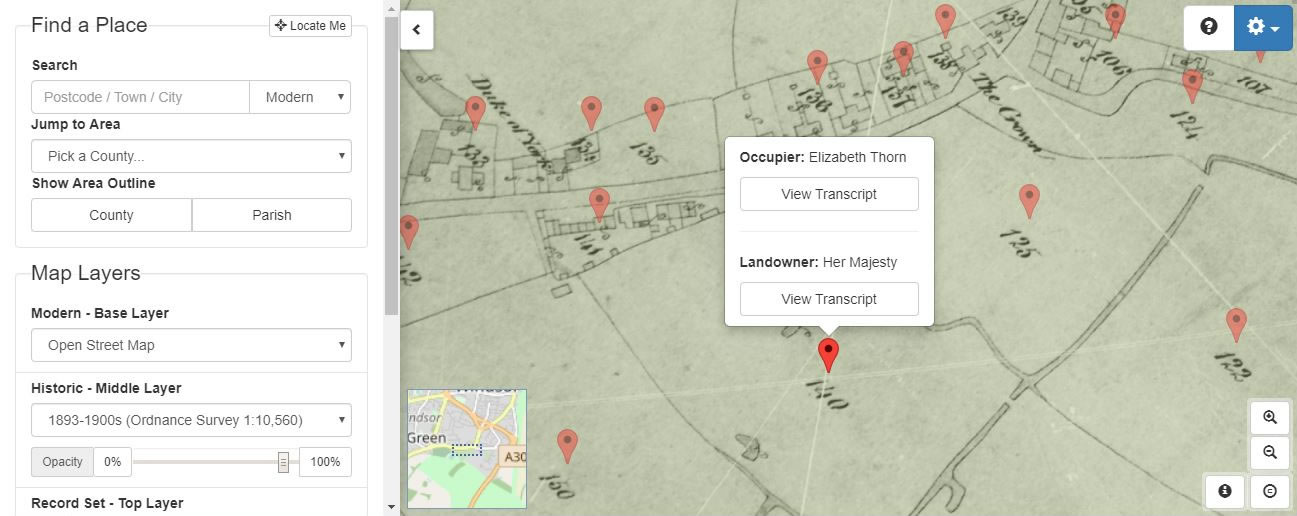
New Records for Kingston upon Thames, Hook and Malden
24th April 2020
We have just released the Kingston upon Thames, Hook and Malden areas into its Lloyd George Domesday Survey Records on the Map Explorer™.
These fully searchable land owner records enable researchers to find where an ancestor from Kingston lived in the 1910-1915 period. You can now search over half a million individuals in this collection.
By using our powerful Map Explorer™, family history researchers searching for where their ancestors lived in the period before the First World War are able to see the actual plots for buildings and explore the district as it was in that period on large scale OS maps linked to the field books containing descriptions of the properties.
You can find out more about Map Explorer here.
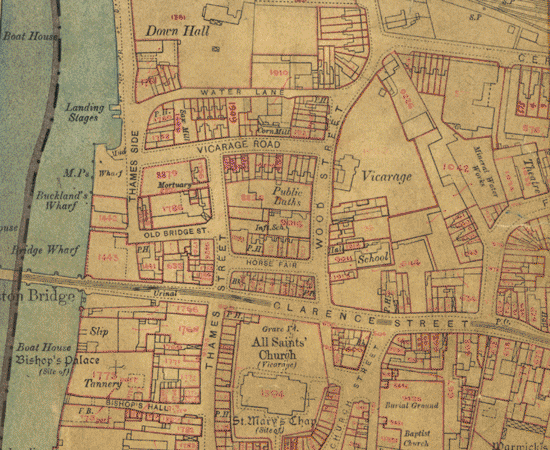
Announcing Essex Colour Tithe Maps with MapExplorer integration, exclusive to TheGenealogist
28th March 2020
The land use has changed dramatically over the last 200 years and the colour Tithe maps in our map tool allows you to explore it in great detail. This release allows us to see the area in West Ham, Essex on which the ExCel centre now stands and to discover the changes from Victorian pasture land, to dock complex and now to the Nightingale Hospital as the Covid-19 emergency builds.
Map Explorer™This versatile tool can give the family history researcher a fantastic insight into what our ancestors' city, town or village looked like over a number of periods and can also help them to find an ancestor's property. With the addition of georeferenced Colour Tithe Maps, TheGenealogist has also today released colour tithe maps for Essex – you can search these as normal or browse them on Map Explorer™.
Subscribers to TheGenealogist's Diamond membership can now view the latest colour or grayscale maps when using the Tithe & Landowner records.
To find out more, you can read Nick Thorne's article, Essex Tithe Maps reveal ever-changing landscape.
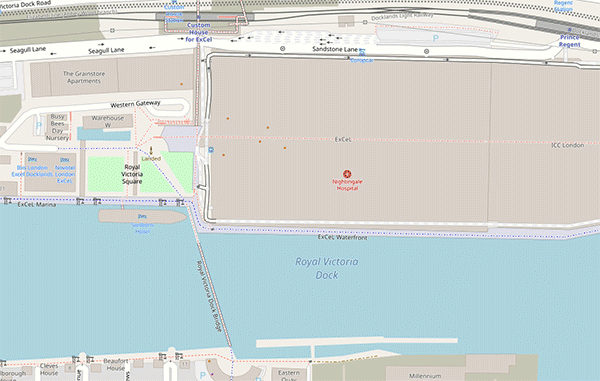
New Pre-Census Trade and Residential Directories
14th March 2020
We have just released a collection of searchable Early Trade and Residential Directories that cover the years 1816-1839 to help find ancestors in the period before the usable census records begin.
Prior to 1841 all of the U.K. censuses were generally statistical: that is, mainly headcounts, with virtually no personal information such as names recorded and so family history researchers need to turn to a substitute to find out the address where their ancestors had lived. Trade and Residential Directories list names of tradespeople, prominent citizens and in some cases other residents of a town as well.
Many of these directories will also give a good description of the town or area which can give family historians an interesting insight into the social history of their ancestors' locality at the time. This information usually includes the main industry, topographical details, communication links with the surrounding towns by stage coach or railway, and details of local administration offices, post offices, the clergy, charities, hospitals and schools.
The early Trade and Residential Directories being released include volumes that cover the areas of Bedfordshire, Berkshire, Buckinghamshire, Cambridgeshire, Cornwall, Derby, Devonshire, Dorsetshire, Durham, Essex, Glasgow, Hampshire, London, Liverpool, Middlesex, Northumberland, Norfolk, Nottinghamshire and Suffolk.
Find out more about this interesting resource with our intro here:
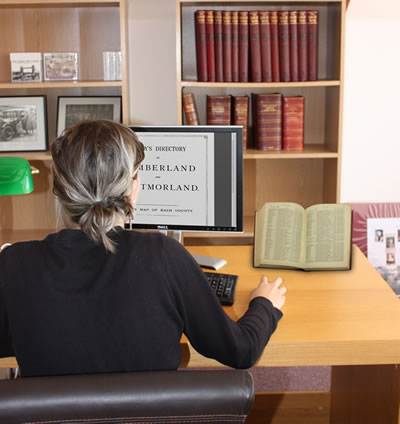
New Property Records for Greenwich
28th February 2020
We have just released over 57,700 individuals from the Greenwich area into our Lloyd George Domesday Survey Records on the Map Explorer™. These fully searchable property records enable researchers to find where ancestors from Greenwich lived in the 1910-1915 period. This release now brings the total coverage of Lloyd George Domesday Survey Records to over half a million individuals.
By using our powerful Map Explorer™, family history researchers searching for where their ancestors lived in the period before the First World War are able to see the actual plots for buildings and explore the district as it was in that period on large scale OS maps linked to the field books containing descriptions of the properties.
You can find out more by reading Nick Thorne's article Greenwich property records reveal the lost past.

New RAF Operations Book Records
6th February 2020
MAJOR NEW RELEASE
In a release of over half a million records, this is the first batch of RAF Operations Records Books (ORBs) to join our ever-expanding military records collection. This is the first time that these RAF records are fully searchable by name, aircraft, location and many other fields, making it easier to find your aviation ancestors.
These documents tell the stories of these brave aircrew who battled against the odds and give insights into their everyday lives. You can use the collection to follow an airman's war time experiences from these fully searchable Air Ministry operations record books which cover various Royal Air Force, dominion and Allied Air Force squadrons that came under British Command. They allow the family history researcher a fascinating insight into their relatives serving in a number of wartime air force units.
The records provide summaries of events and can reveal the death of aviators, crashes, as well as less traumatic details such as weather and places patrolled by the planes and where the squadrons were based as the war wore on. As aircrew personnel are named in these reports, those wanting to follow where an ancestor had been posted to and what may have happened to them will find these records extremely informative.
Use these records to:
- Add colour to an aircrewman's story
- Read the war movements of personnel in air force units
- Discover if a pilot, navigator, radio operator or gunner is mentioned in the action
- Find if an airman is listed for receiving an Honour or an Award
- Note the names of squadron members wounded, killed, or did not return
- Easily search these National Archives records and images
To find out more about these records, you can read Nick Thorne's article "RAF Operations books build a picture of WWII aircrew ancestors' action".
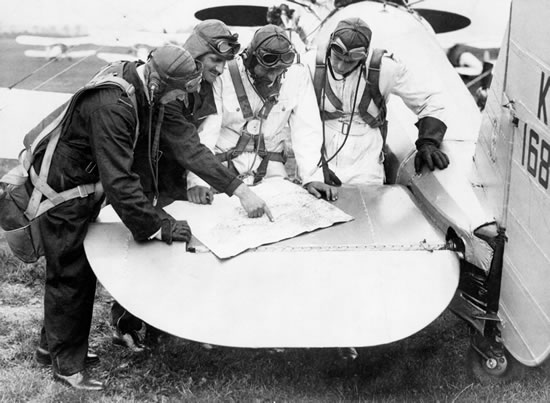
New Norfolk Parish Records
20th January 2020
We have just added over 500,000 individuals in a new release of Norfolk Parish Records with images of the original records in association with the Norfolk Record Office. We have transcribed them so that they are fully searchable by name and place.
These East Anglian records feature the registers of baptisms, marriages and burials covering various parishes in Norfolk, allowing family history researchers from all over the world to search for their Norfolk ancestors online. This release, accessible with our Diamond subscription, includes 330,000 individuals from baptisms, 100,000 from marriages and 95,000 from burial records.
- Search by name the transcripts linked to the original images
- Uncover the dates for baptisms, marriages and burial events
- Discover names of family members and in some cases occupations
- Some of the surviving records stretch back into the 1500s
This release has been added to millions of existing parish records for this area and tens of millions of parish records for other counties.
To find out more about this release, you can read Nick Thorne's article, The Millers at Docking Windmill.
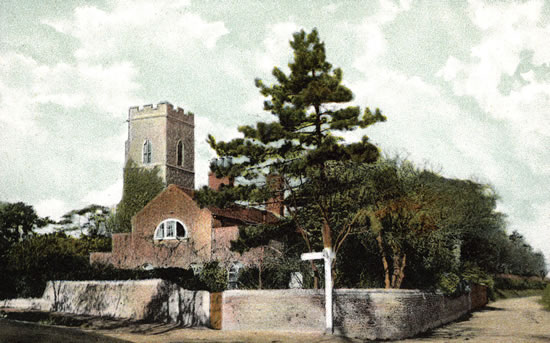
Colour Tithe Maps added to Map Explorer™
6th January 2020
MAJOR NEW RELEASE
Our latest innovation to help you find an ancestor's property and watch the landscape change over time has now been enhanced by the addition of georeferenced Colour Tithe Maps. So now you can view exactly where your ancestor lived or worked on a modern day map. We're also releasing colour tithe maps for Cumberland - you can search these as normal or browse them on Map Explorer™.
The colour maps now available on MapExplorer™ cover the counties of Warwickshire, Rutland, Huntingdonshire, Buckinghamshire, Middlesex, Northumberland, Surrey, Westmorland, York City, North and East Ridings of Yorkshire along with the newly launched Cumberland.
Joining the georeferenced Lloyd George Data Layer, Headstones and War Memorials, the Colour Tithe Maps are a significant addition to the ever-expanding Map Explorer™. Our Diamond subscribers have access to all layers within Map Explorer™.
To find out more about the release, you can read Nick Thorne's article Exploring the Island at Twickenham.
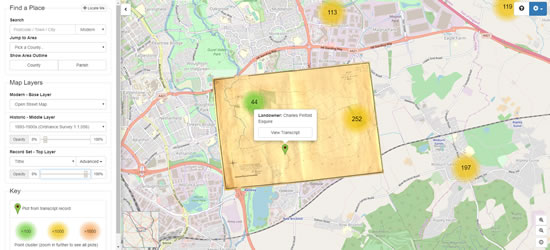
Choose a year
Featured Articles
Visit our featured article section for fascinating stories and the latest news from the world of genealogy.
Latest Articles
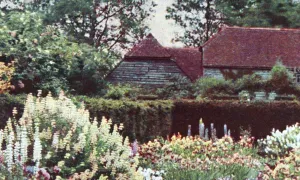
The Strange Case of Jekyll (and Hyde) the Garden Expert
24th April 2024
We reveal where a garden designer put down her roots using this important Surrey land tax release.

More than just an address
11th April 2024
Looking up our forebears in the Street and Trade Directories

A long way from Tipperary
15th March 2024
Australian outlaw’s father discovered in the Irish Parish Records
Next Event
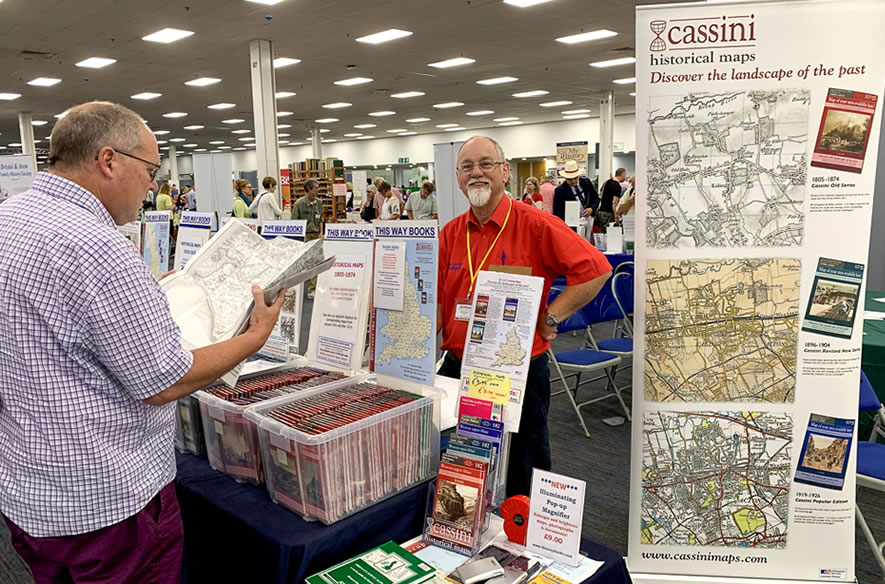
The Family History Show, York!
Saturday 22nd June 2024
10:00 –16:00 (GMT)
Put your research questions to an expert, watch a talk, speak to a local society, archive or genealogical supplier.
- Free talks all day, held in a large lecture hall.
- Free Experts on hand to help with your queries.
- Many family history societies, archives and companies will be attending from all over the country.
Special Offer! Buy tickets for £8.00 (£12.00 on the day)
Buy your tickets early and get two for the price of one!
Find Out More Purchase Tickets
Future Events
Unable to make the next show? We also have shows planned for the following locations:
Press Releases
Visit the press releases section for the official write-up of all our news.
